I continue to tell the story of the Moscow Triumph Gates at St.Petersburg (beginning of the story is here). I will start with photo oldies that please the eyes of any vintage / oldies lover.
An undated photograph of the Gate, circa 1900s. The wooden boardwalk on the right is a bridge over the now defunct Ligovsky Channel. The numerous bollards on the side of the road are apparently intended for parking the main vehicle of the modern era - horses.

Filled up to the surface Ligovsky Channel near the Moscow Triumph Gates (1927) #src

Aerial cityscape ("from a bird's eye", as we say), a high resolution photo with all details you can examine, was a luxury at that time. Nobody had quadrocopters, not even Nikola Tesla. However, there existed balloons and aerostats - so, such photographs exist, I found several of a decent size to enjoy the details. NB: there were several monastery bell towers nearby, that were deleted in 1930-es, they also were used at that time to photo wide-angle cityscapes).
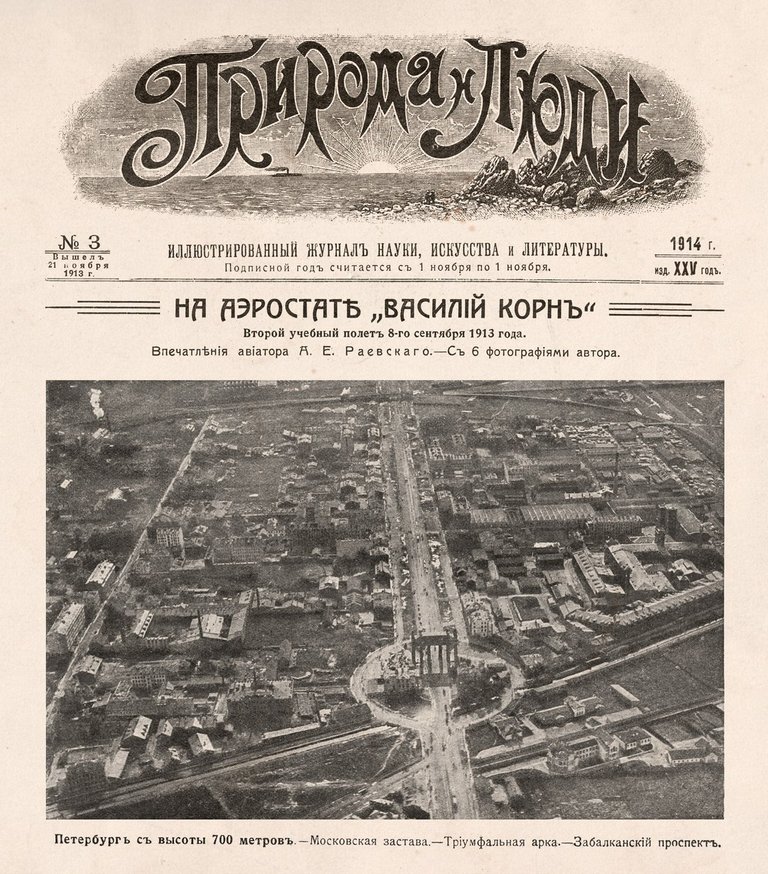
Year 1913. View at Moskovsky Avenue (at that time it was named: Zabalkansky, after 1918 was named Mezhdunarodny) and the Moscow Triumph Gates, made by aviator A.Raevsky from the «Vassily Korn» balloon. Shooting direction: outside from the city center. Note: the line at 20 degree angle, crossing the Gates Square, is the Ligovsky Channel. (By the end of the 19th century, it have lost its importance as a water transport artery of the city, fell into desolation and by 1926 it was filled up, with its space transforming into Ligovsky Avenue).
Accordingly, everything you see in the photo is not included in the 'historical part of the city', all these buildings, mostly of industrial and warehouse purposes, appeared in the 19th century, this was very much an empty fields before that. Thus, this talking photo shows how much the city has grown. Below is another similar aerial photograph, this time taken from an airplane, showing same area from the opposite direction - towards the city center. Buildings sizes and look hint most of them are industrial, non-residential.
Year 1914. View from the cockpit of «Ilya Muromets» airplane (shooting direction: towards the city center). #src «Russian Imperial Air Fleet in photographs of the early XX century», St.Petersburg, 2011.

Postcard, depicting a cycling rally (maybe a start, maybe a finish? The beginning of 1900-es.
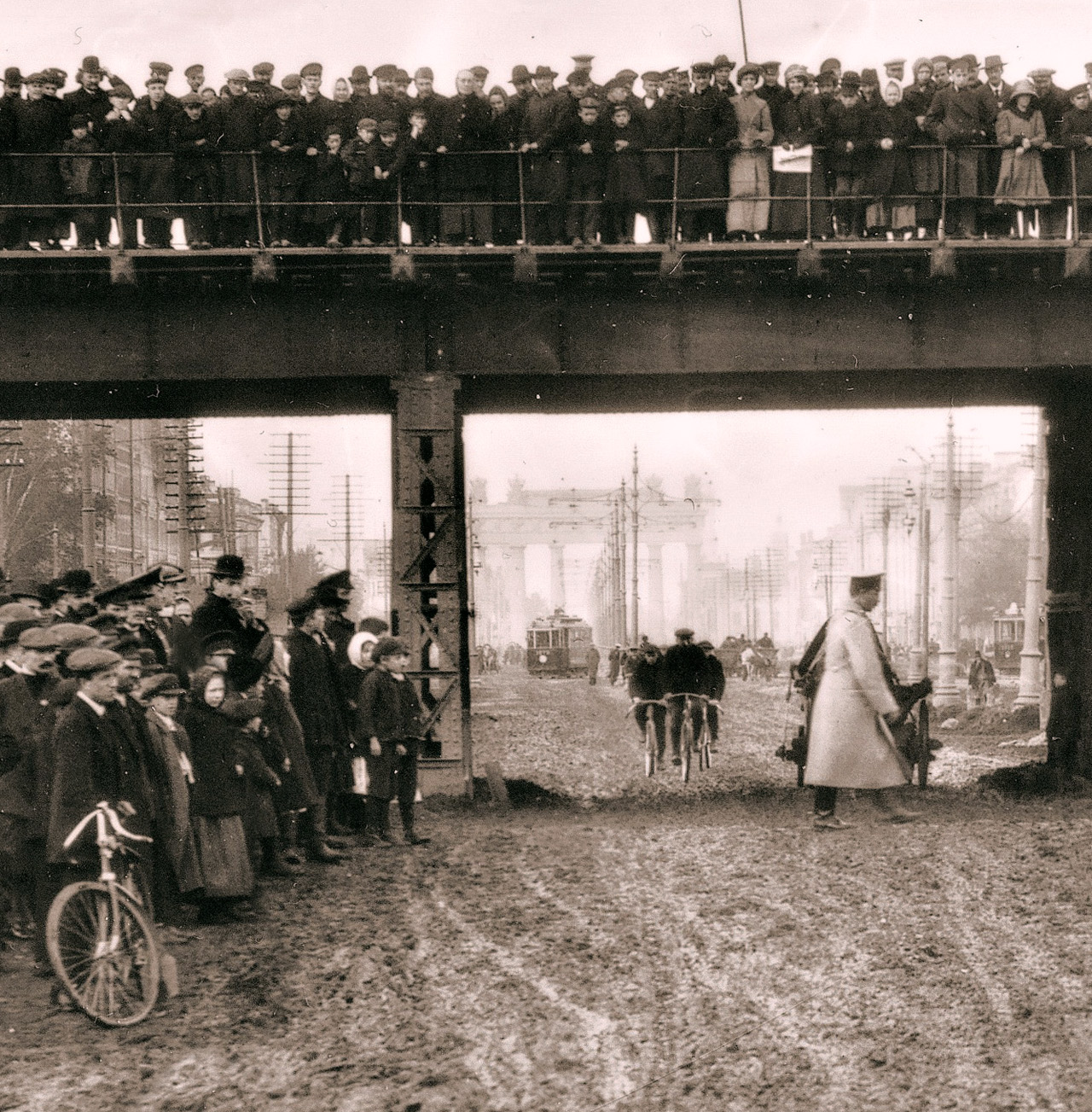
In the photo above: spectators greet the participants of the All-Russia motor rally at Mezhdunarodny Avenue, August 18, 1925. The Moscow Gates, being the main entrance to the city from Moscow direction, regularly performed a function of official greeting / meeting location. Back in the 19th century, soldiers returning from victorious wars were often honored here; in the first decade of the XX century, when bicycles, motorcycles, cars, and airplanes quickly entered life, all kinds of competitions and races were extremely popular - people willingly paid money to look at such innovations; sportsmen, cyclists, racers and aviators were popular no less than famous film actors! Since the beginning of the XX century, a lot of photographs have been taken here in the genre of 'participants of blah-blah-blah... at the finish line' and 'the public greets participants of blah-blah-blah...' - I have several such photos in my collection.
Below: 'The finish line of Moscow -- St.Petersburg cycling rally' (1908). The Gates can be seen at the background. Note this huge public crowd of spectators!

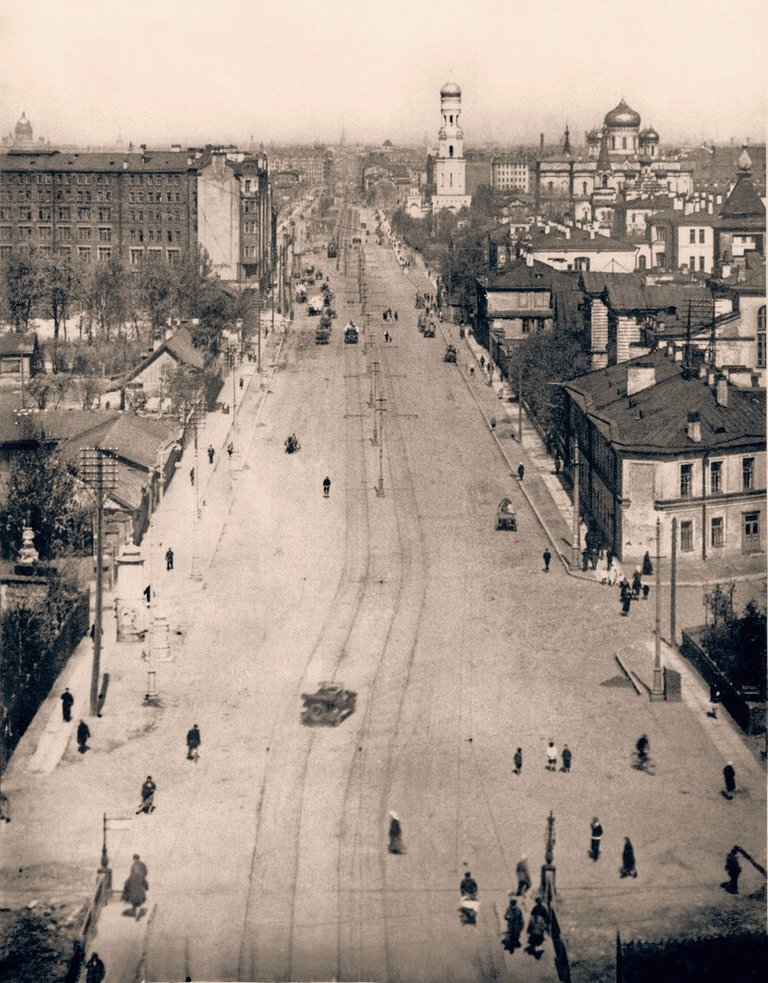
Year 1929, photographer L.Andreevsky made photographs from the Colonnade of the Gates, capturing the perspective of the avenue (at that time it was renamed from 'Zabalkansky' to 'International' - the international situation and the export of revolution to capitalist countries was in trend back then). A wonderful view, absolutely not overloaded with crowds of pedestrians or cars. There are quite a few horse carts visible. Traffic congestion problems are not visible even on the horizon! Most of the street is not even a carriageway.

In year 1931, the American photographer Branson Decoe visited Soviet Russia. His digital archive has been digitized and is available at the website of University of California's Library - there are 8000 (!) hand-painted slides that the photographer made over the years of his travel (285 photos represent Russia; see more of his Leningrad captures). Thanks to Decoe, we have the first color photo of the Gates taken at a critical moment ... but I'm not going to get ahead of myself. Two details in the photo are of special interest: note the tram's movement (2 lines) through the central span of the Gates (the architect planned its width in such a way that two carts could pass, and this worked, this was working well enough for a long time - but in the case of car traffic, there is enough stock has already ceased).
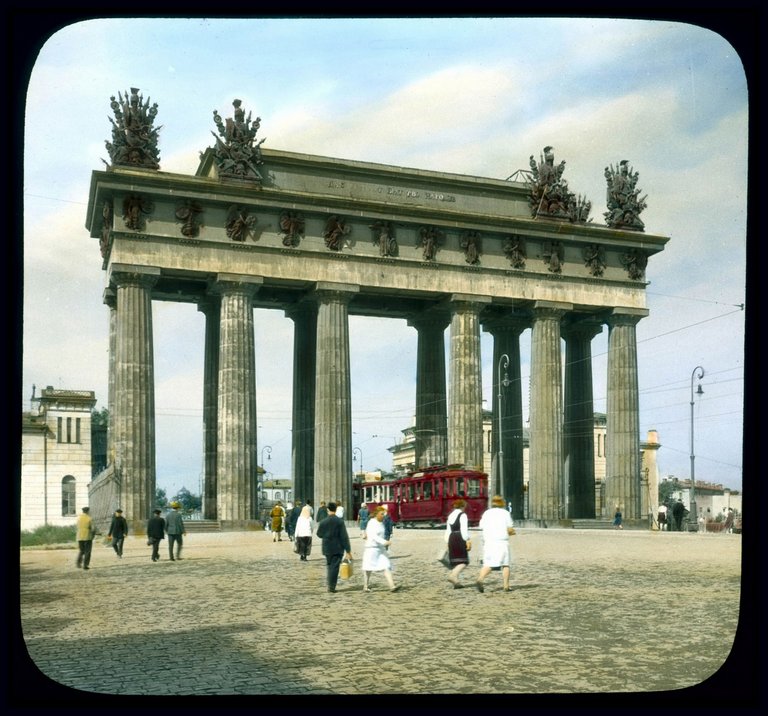
The second detail: on the pediment one can see the remnants of the inscription «Hail the brotherhood of nations», installed in 1918 instead of the previous one (glorifying the victories of the Russian imperial army in the 'unfair' conquest wars against Persia, Turkey, and the suppression of the Polish uprising of 1830). It's funny and bittersweet: what was done under the new government did not last well even for two decades! Feel the difference...

Year 1936. The Gates and buildings across the avenue are decorated for the May 1 celebration. Note the wide, tree-lined boulevard. In Soviet times, the Gates began to be used for for agitation, it was a huge, perfect 'ad medium', as we name it today. During all kinds of citizens demonstrations, on official dates, they were decorated with posters full of various slogans and figures, placing the right accents in the minds of the citizens.
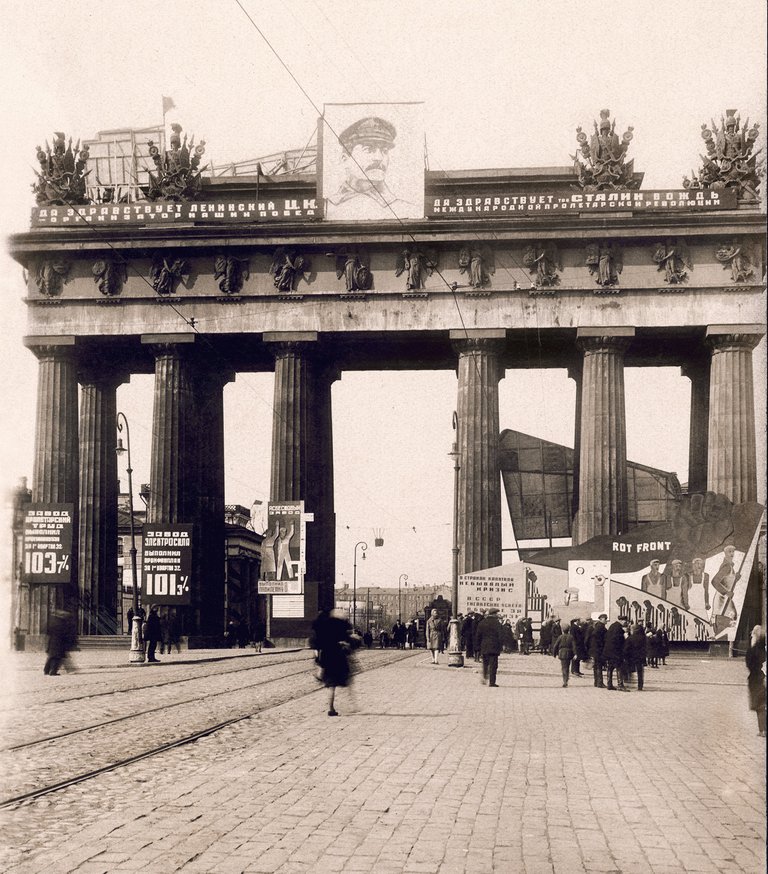
Year 1932. The Gates are decorated for the 1st May celebration and parade.
The pavement is still cobbled. Russia is moving towards industrialization, making 'five-year plans', but horses are still the main transport. Photo: M.Shafran.
Photo from 1930s, exact date and author unknown. View from the Colonnade towards the city center. On the left side of the Mezhdunarodny avenue, you can see the 'Kapranov House of Culture' built in 1931 (NB: it was built for the workers of the nearby shoe factory «Skorokhod». In 2006-2009 the building was dismantled and completely recreated from modern materials, the inner layout also has changed - it was 'a reconstruction with its appearance recreation').
The photo above is my favorite of all the variety. Why? This is the only photograph [ I have seen ] hinting how splendid the Gates Square looked like in the past; I consider it may be its best portrait (choosing from what we have). In the last part I will share its curret photos made from a quadrocopter, but I do not want to break the chronology. The contrast between what has been and what has become, is striking ... perhaps these are just peculiarities of my personal perception. Yes, this is a photo from the 30s, but if you rewind time for a couple of decades back, this is how it was - billboards! see the billboard on the lantern at the bottom of the photo? I think it advertises some kind of alcohol! ...gracefully curved lanterns, carts in large numbers and rare cars, a small 'chamber-esque' square is surrounded by a beautiful lattice, benches of original design are also placed there (tho not seen in this photo). This intimacy and comfort, as the city scaled up and the urban environment and the pace of life changed, completely disappeared from it over the years, slowly and steadily, expanding and reconstructing, the city lost various stuff along all the way, all these small elements we are so in love with.
The Gates were made thoroughly, for centuries. But during the years, aggressive influence of the northern climate and non-stop sudden weather changes was leaving their marks day by day. The original patinated bronze paint peeled off, corroded small details of the decor disappeared and, finally, a technical inspection of the condition carried out in 1928 showed that minor repairs and renewal of the lost details were necessary. In 1929, the first restoration of the Gates was carried out (sculptor N.F.Waldman, chaser A.V.Konyakin). And in 1935 the Gates received a 'major restoration' (carried out by the sculptors G.A.Simonson, R.K.Taurit, I.V.Krestovsky). However - what an irony of the fate! - the renovated monument stood for only one year ...
New bolsheviks government was erasing and rewriting, faking, manipulating the memory of the previous tzarist epoch as best as it could. The old intellectual elite were forcefully kicked off abroad (and then shot or repressed in concentration camps), rewrote textbooks, invented new holidays, demonstrated with all possible clarity the grandiose triumph and finality of the victorious proletarian revolution and the success of the new proletarian state. As for the Gates... the inappropriate old-regime grandeur did not want to disappear. There is one suspicion that the main "problem" with the Gate was. No, the growing needs of the city for transport arteries and the need to equip the avenue have nothing to do with it. It's just that the Gate was too majestic a monument to a former life that should have been forgotten. New monuments dedicated to what is worthy (from the point of view of the victorious "proletarian class") had yet to be erected. And this was an old memory, a shortage. Jealousy.
This one I'am adding just for chronology; the archival card attributed the photo as 'August 1936', and classified / labelled with this caption: "A peaceful socialist life at Leningrad". Probably this was one of the last photos of the Moscow Triumph Gates. In less than two months, by the end of September, this place would look like very different:
To be continued.

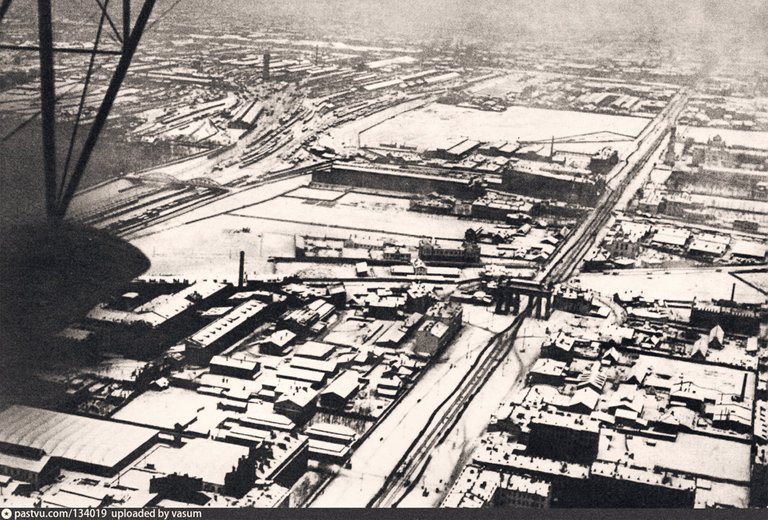
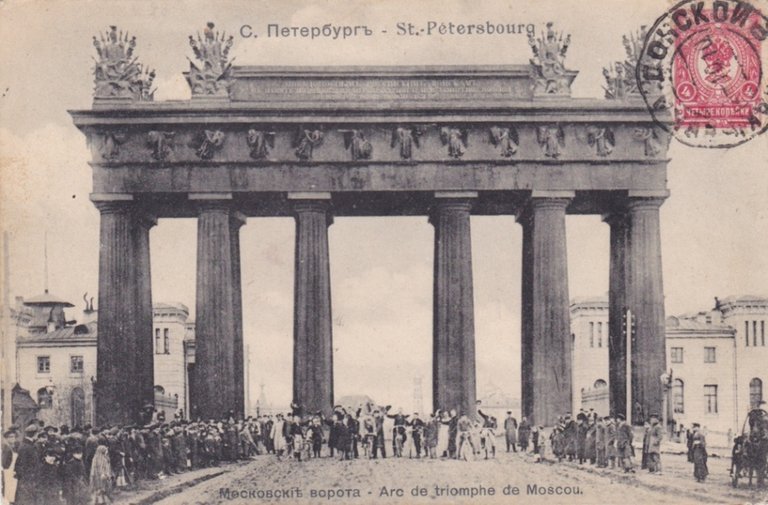
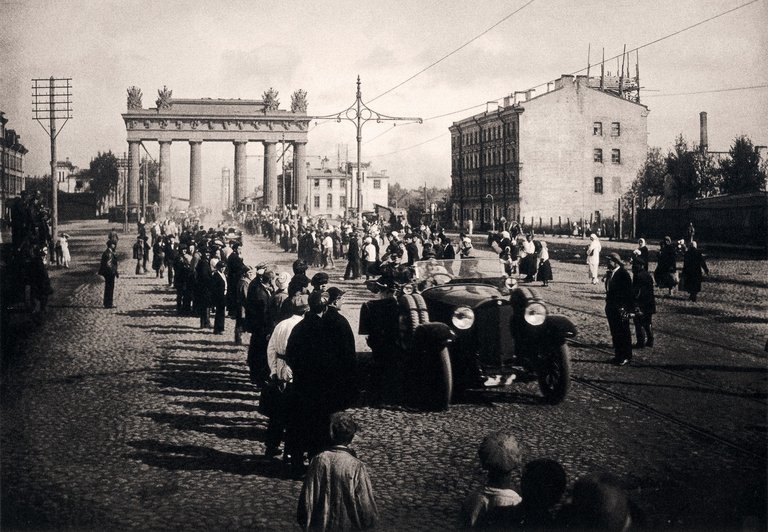
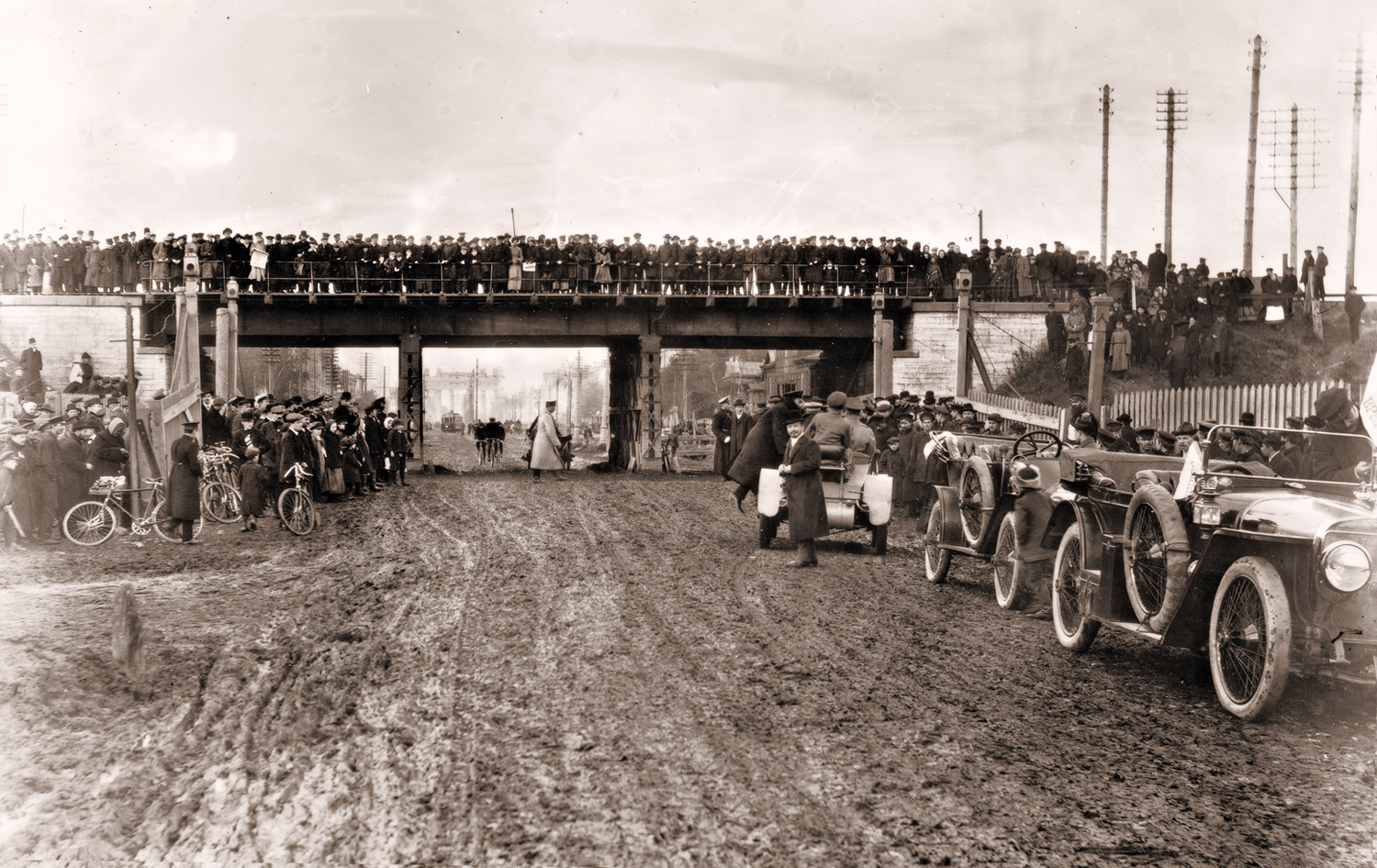
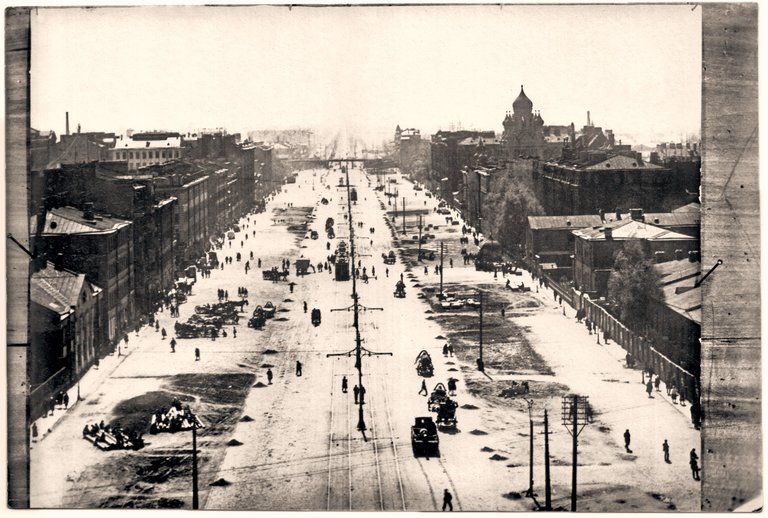
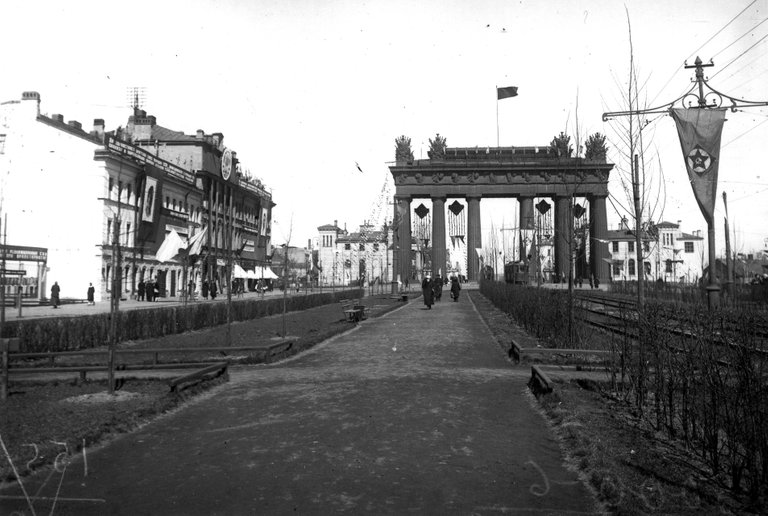
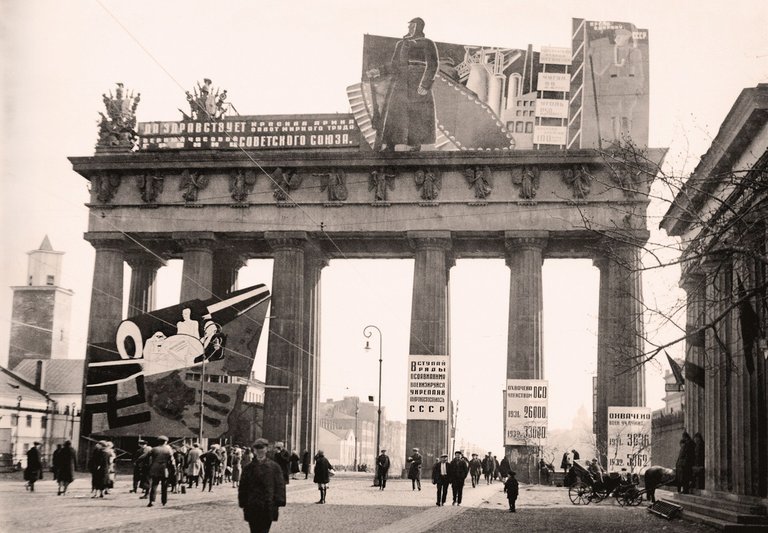
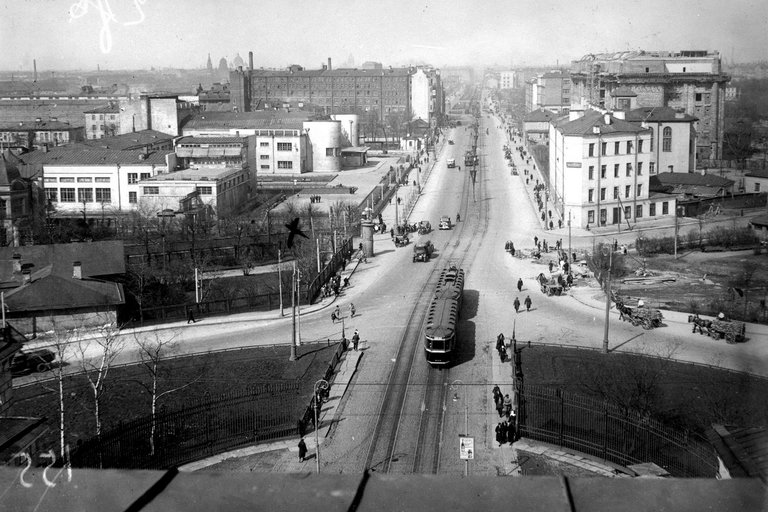
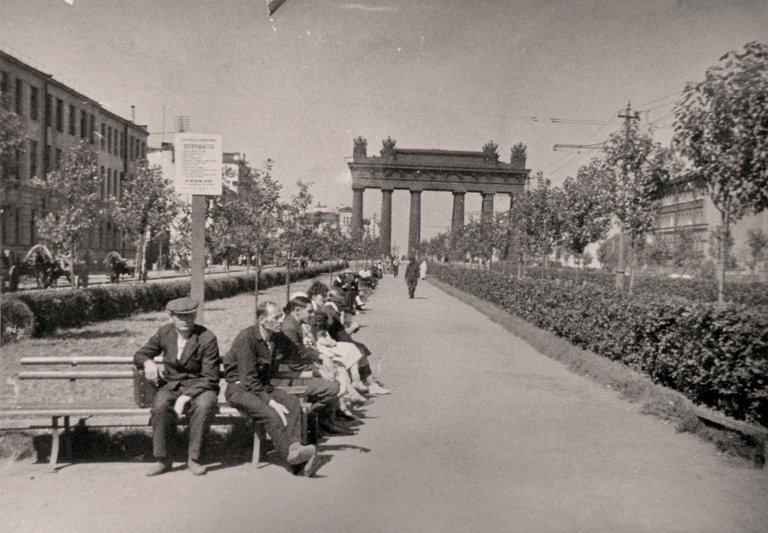
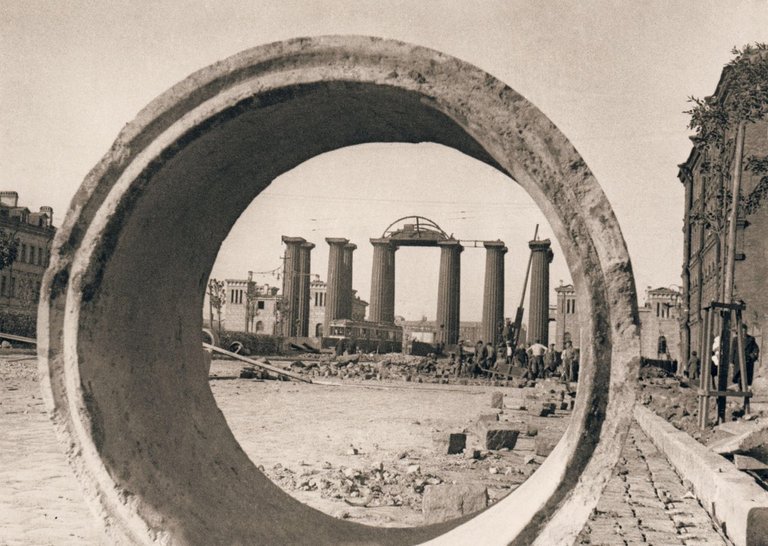
The accurate opening width between the columns to accommodate 2 trams is brilliant.
I find this tragic when you said,
The attempts to erase previous history and triumphs.
I agree, it was much better off with the landscape as shown in your favorite photo from the colonnade.
thats true. my country suffered tremendously since the XX century have started, a lot of sad pages were added to its history.
Indeed and the architecture around us has witnessed such events in history.
too may wars in XX...
do you know about the Leuven library tragedy ?
I like to look at old photos, a whole era has frozen in them
ты тут материала на целую диссертацию нагрёб!
А советскую власть смотрю ты не очень))
я не мешаю тебе спать и уже видеть сны, но все же пошепчу на ушко, что конечно я благодарен соввласти за бесплатное образование и медицину, детский сад без очереди и щасливое детство, и за десять лет пионерлагерей... но вот например за расстрелянного Гумилева и сгноенных на этапе Мандельштама, Введенского и десятки сотни тысяч других хороших людей - уже не очень.
давай не будем тут срачь разводить. кстати, в каком году власть советов кончилась и сменилась властью ВКП(б) и ее обкомов, не напомнишь? как по мне, предполагаю что уже в середине-конце 20-х годов: всё, упс. упс. так что мы ее почитай что и не видели, может, настоящая децентрализованная власть муниципальных советов, выбираемая местными и подотчетная им, мне бы наоборот очень даже понравилась.
т.е. до середины 20-х власть была советской? :)
Лана, не место тут для таких тем
View or trade
BEER.Hey @qwerrie, here is a little bit of
BEERfrom @pixresteemer for you. Enjoy it!Learn how to earn FREE BEER each day by staking your
BEER.👍
@sharker, рад что вам понравилось. я все это по-русски опубликую тоже, будет полнее версия - приятнее будет читать. так поневоле приходится упрощать и обрезать, чтобы донести мысль. длинная и интересная история. многое натуральные питерцы даже и вообще не в курсе, что Ворот в городе "не всегда было".
О, если будет ещё и полная русская версия, будет отлично! Это интересно, спасибо, просто отличное историко-архитектурное исследование у вас получается.